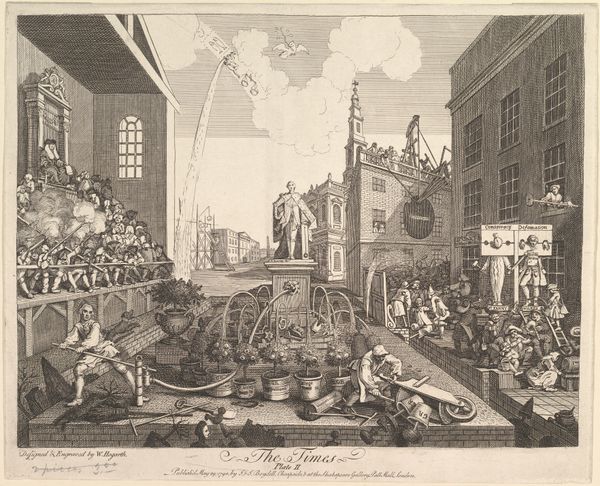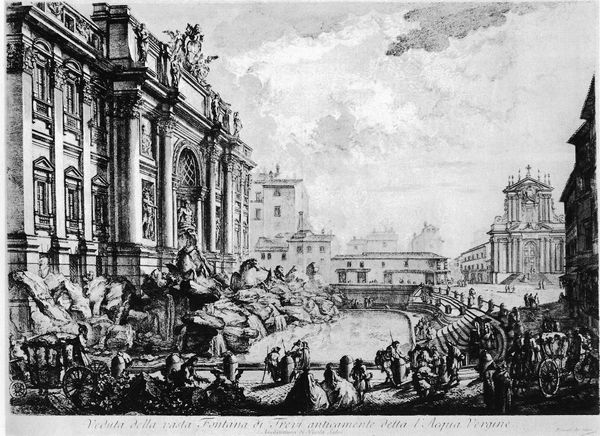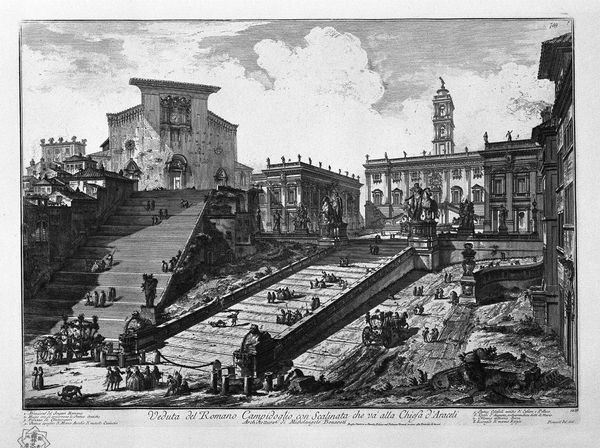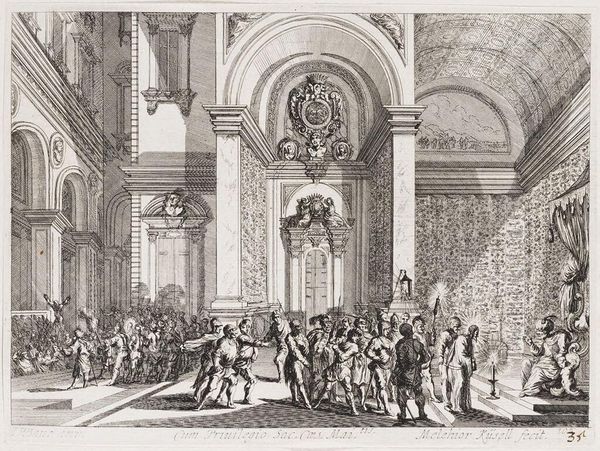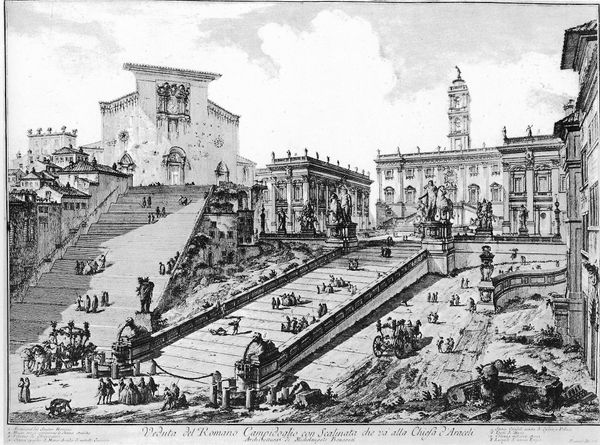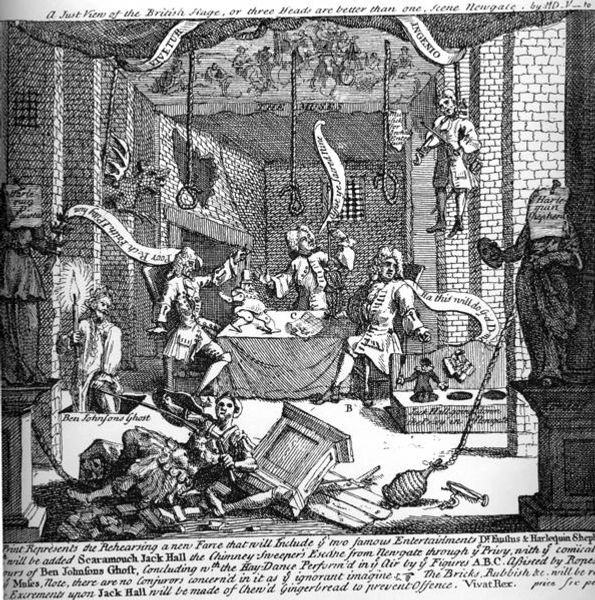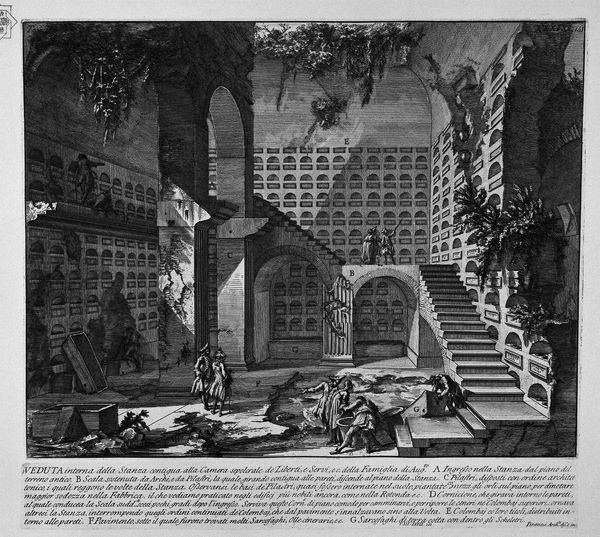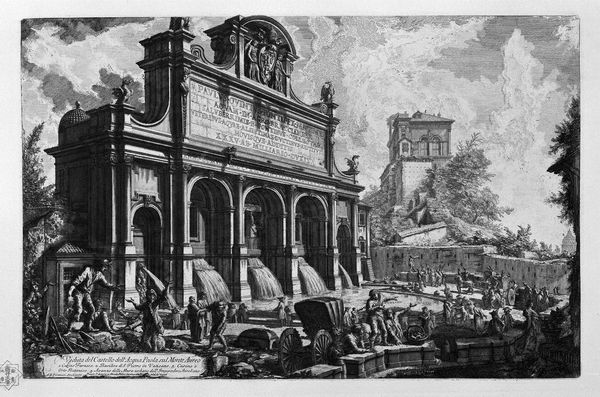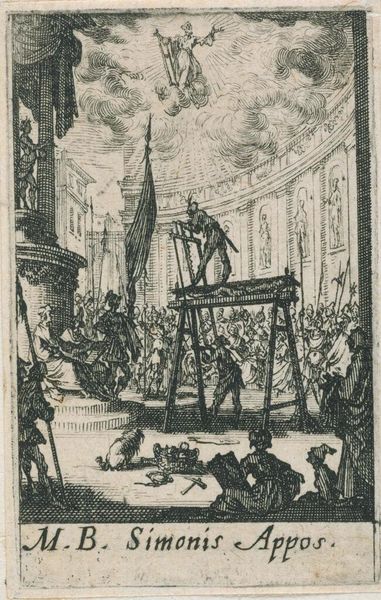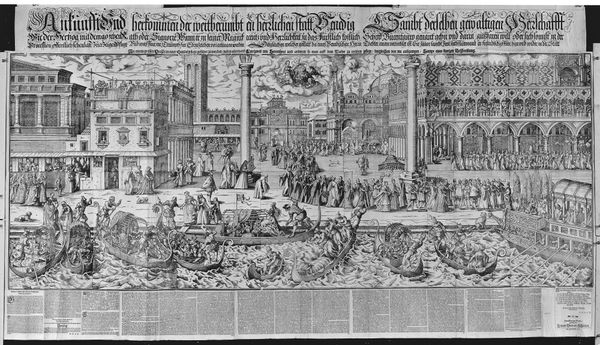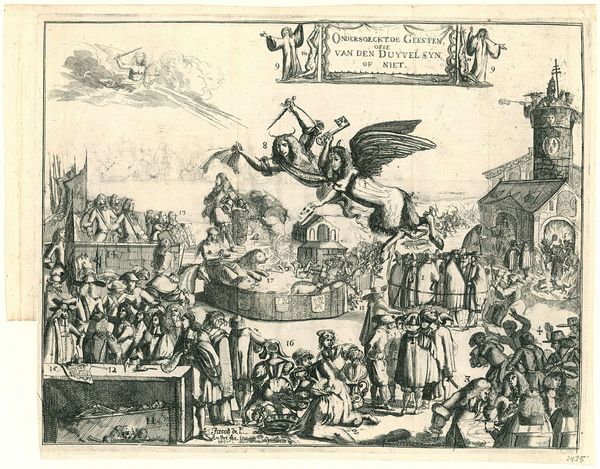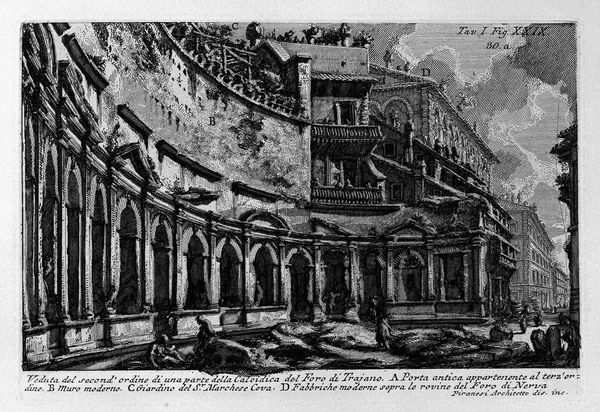
print, engraving
#
allegories
#
allegory
#
comic strip
#
mechanical pen drawing
# print
#
genre-painting
#
history-painting
#
engraving
#
realism
Copyright: Public domain
Editor: Here we have "The Times, Plate 2," an engraving by William Hogarth, created in 1763. The composition feels quite chaotic, almost like a political cartoon. There's so much happening in one scene! What do you make of this work? Curator: This is Hogarth using printmaking to engage with contemporary politics. Forget high art; look at the process. Engravings like these were mass-produced and disseminated. What commentary is Hogarth offering through the *means* of his work being readily available for public consumption? Editor: That’s a good point, it's very accessible... almost like a newspaper. So the method itself adds another layer. What about the symbols he uses? Curator: Exactly! Symbols point to production. The elaborate fountain fueled by a chamber pot suggests how government policies "water" and cultivate specific factions. And notice the broken printing press on the ground. Consider Hogarth's position: how does *his* mode of artistic production interact with the political and social events he depicts? Editor: So it's not just about *what* he's saying, but *how* he’s distributing his message? Does the choice of engraving reflect on the printing industry itself at the time? Curator: Precisely. Engraving allows for replication and broad reach. The materiality allows the work to be actively circulating through the burgeoning world of print media. Hogarth critiques the systems and sources by which narratives get disseminated in the first place. How are these modes being capitalized upon, and who has access? Editor: It’s interesting to think about how the means of creating and distributing art can be just as important as the image itself. Curator: Agreed. Hogarth’s sharp satire, delivered through readily available prints, cleverly implicates the very process that makes his work possible. We can recognize his awareness of the interplay between artistic production, social critique, and a developing print market.
Comments
No comments
Be the first to comment and join the conversation on the ultimate creative platform.
